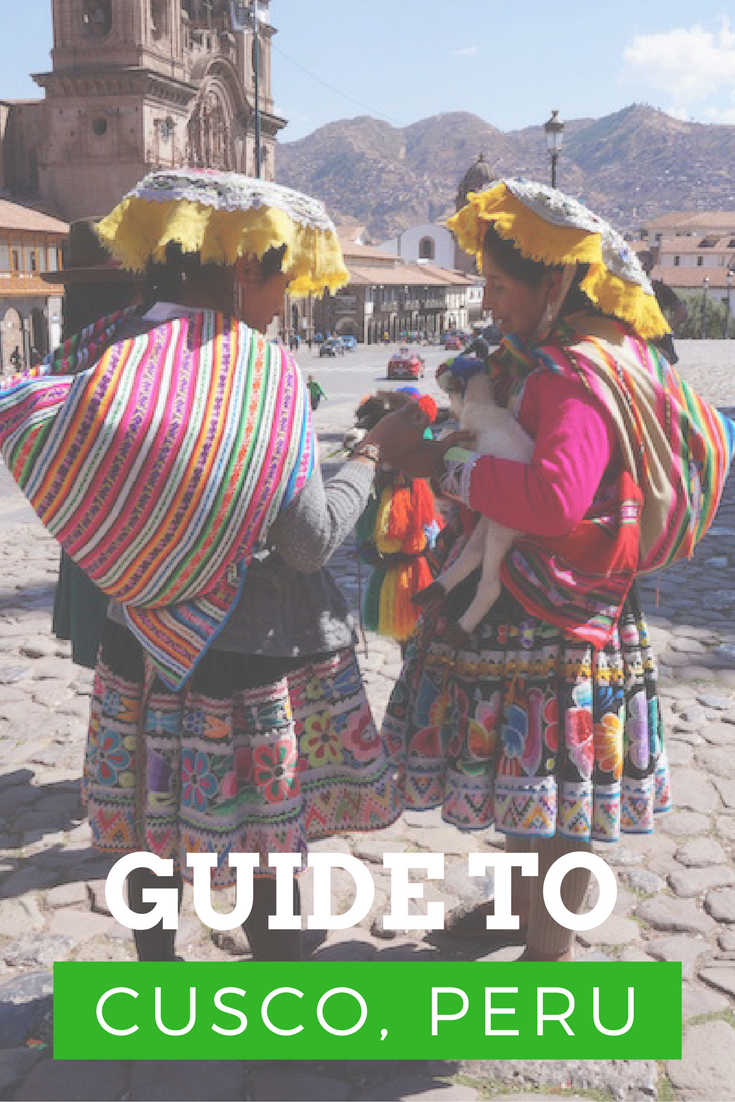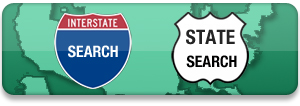We traveled through Peru with Vantage Adventures, which I highly recommend. However, this guide is designed to be useful to you whether you’re traveling with Vantage, another tour company, or on your own.
Cusco, Peru is the capitol of the Incan empire, and home to 500,000 Andean people. It’s a beautiful, vibrant, colorful city of contrasts. One minute, I’d feel as though I’m in the heart of Central America, with street foods, tourist vendors, and unfinished construction, and the next, I’d turn a corner to see a cobbled square with cathedral that could rival any in Europe.
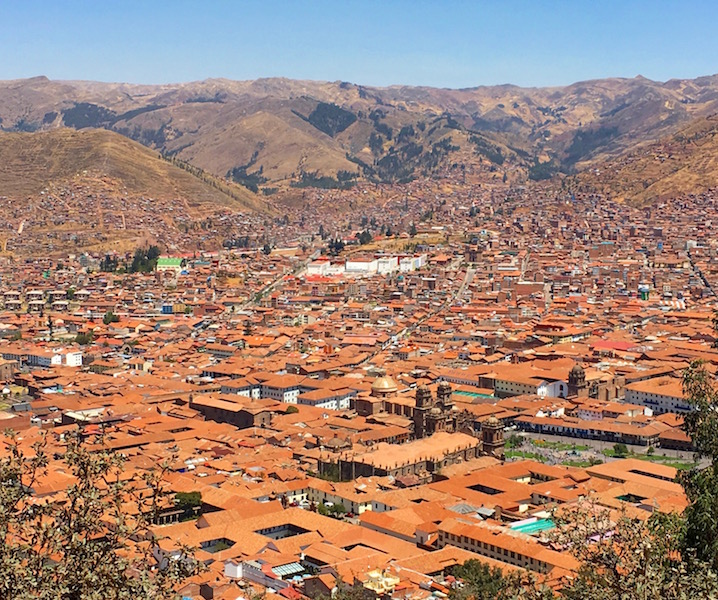
The clash of Incan culture with Spanish rule is fascinating; on any given street, you can see the influence of Roman Catholic dominance in art, churches, and hillside Cristos, but also the Incan history in the faces of the Andean people and in the preserved ruins. On narrow alleys, you can glimpse the dome of a cathedral while running a hand along an Incan wall. It’s wonderful.
Table of Contents
Guide to Cusco Peru:
Most of the cultural attractions of Cusco are located in the downtown area, around Plaza de Armas. Here’s what not to miss:
- Convento de Santa Domingo del Cusco: this cathedral is on par with any I’ve seen in Italy or Spain, and is well worth the price of admission. There are no photos permitted inside, but note the Peruvian influence, which was allowed to carry on even during Spanish rule, such as the cuy (native Peruvian dish) on the plate in the replica of the Last Supper painting, and the Peruvian dress on the statue of Christ at the cruxifixction.
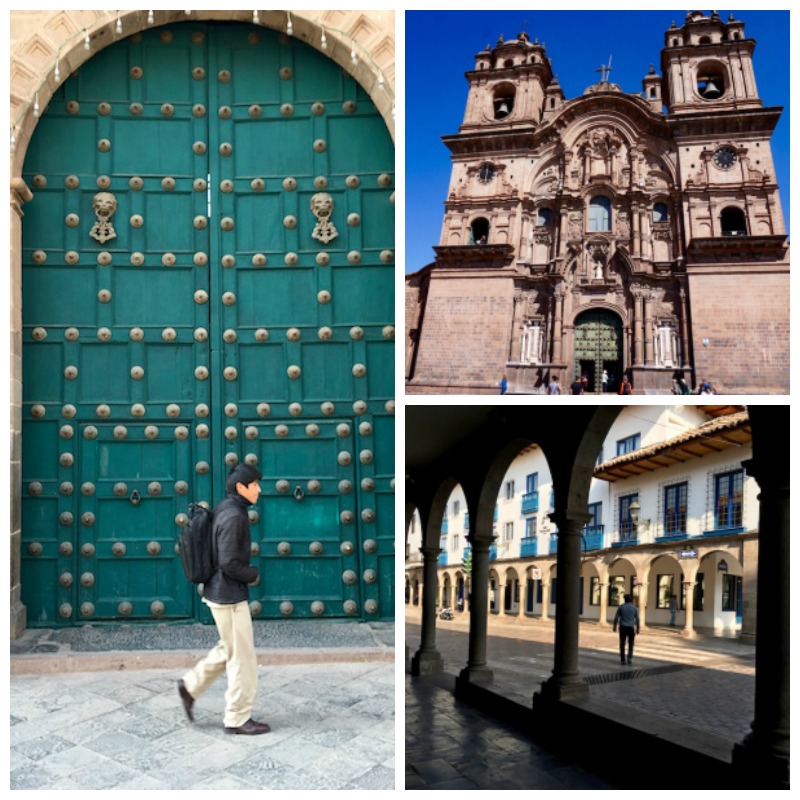
- Streets and squares surrounding Plaza de Armas (named one of the most beautiful plazas in the world by National Geographic). This plaza is indeed one of the prettiest in South America, and the streets that fan out are an eclectic mix of Incan and Spanish culture and influence. You’ll find Incan walls framing narrow alleys, vendors selling colorful textiles, and plenty of statues, arches, and carvings.
- San Pedro’s Market: this huge, colorful market is open every day of the week, and most Cusco residents shop here instead of in grocery stores. Everything you could ask for is on sale, and if you greet shop keepers with a friendly, Buenos Dias, they’ll explain what they’re selling (in Spanish). Drink in the sights and sounds, take photos (asking first), but don’t taste the delicious fruit smoothies unless you have taken medication before leaving home.
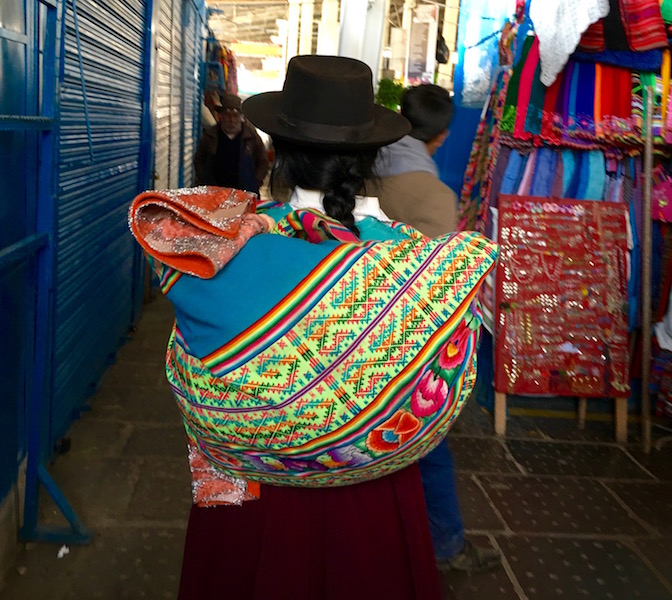
- Saqsayhuaman: this Incan site on the hillside above Cusco is one of the area’s main heritage sites (one ticket will get you into sites in the Sacred Valley as well). At Saqsayhuaman, you can see how Incans walls were built (amazingly, without mortar or any type of filling between stones), and see the remains of sacred temples looking down on the city. Up here, you’ll see the Cristo too (much the same as the famous Rio one), and have great views of Cusco. Bring some soles (Peruvian currency…the dollar is 3 to 1 to the US dollar) for photos with the women in historic costume posing with llamas.
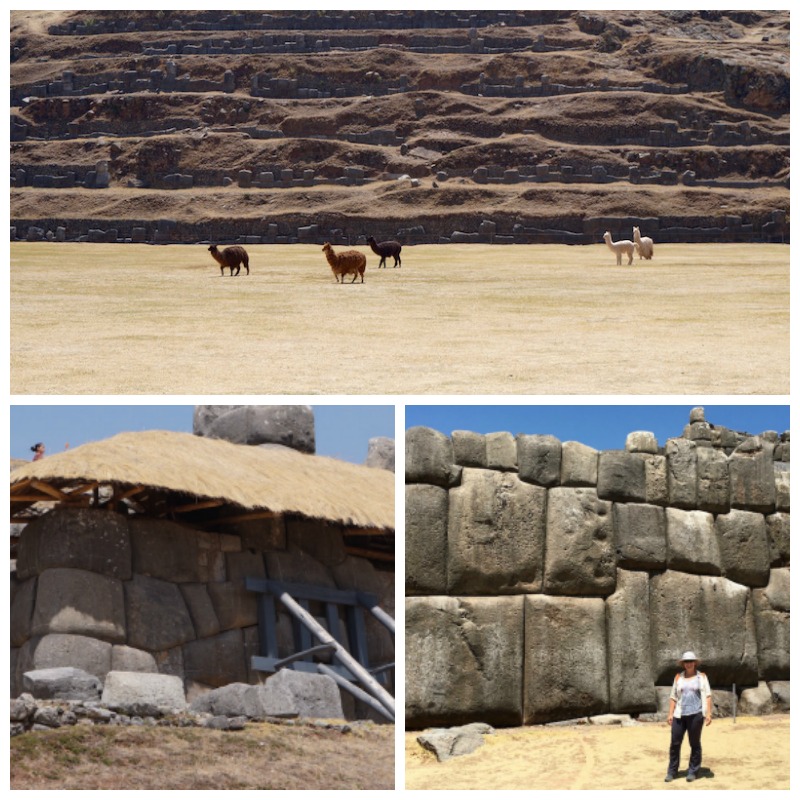
- Temple of the Sun: This Incan site turned Spanish cathedral is, in my opinion, the best example of these two cultures colliding in Cusco. The Incan walls abut the Catholic cathedral, and the Incan Temple of the Sun interior was used as a clergy meeting room until recent years. It’s fascinating…and absolutely stunning.
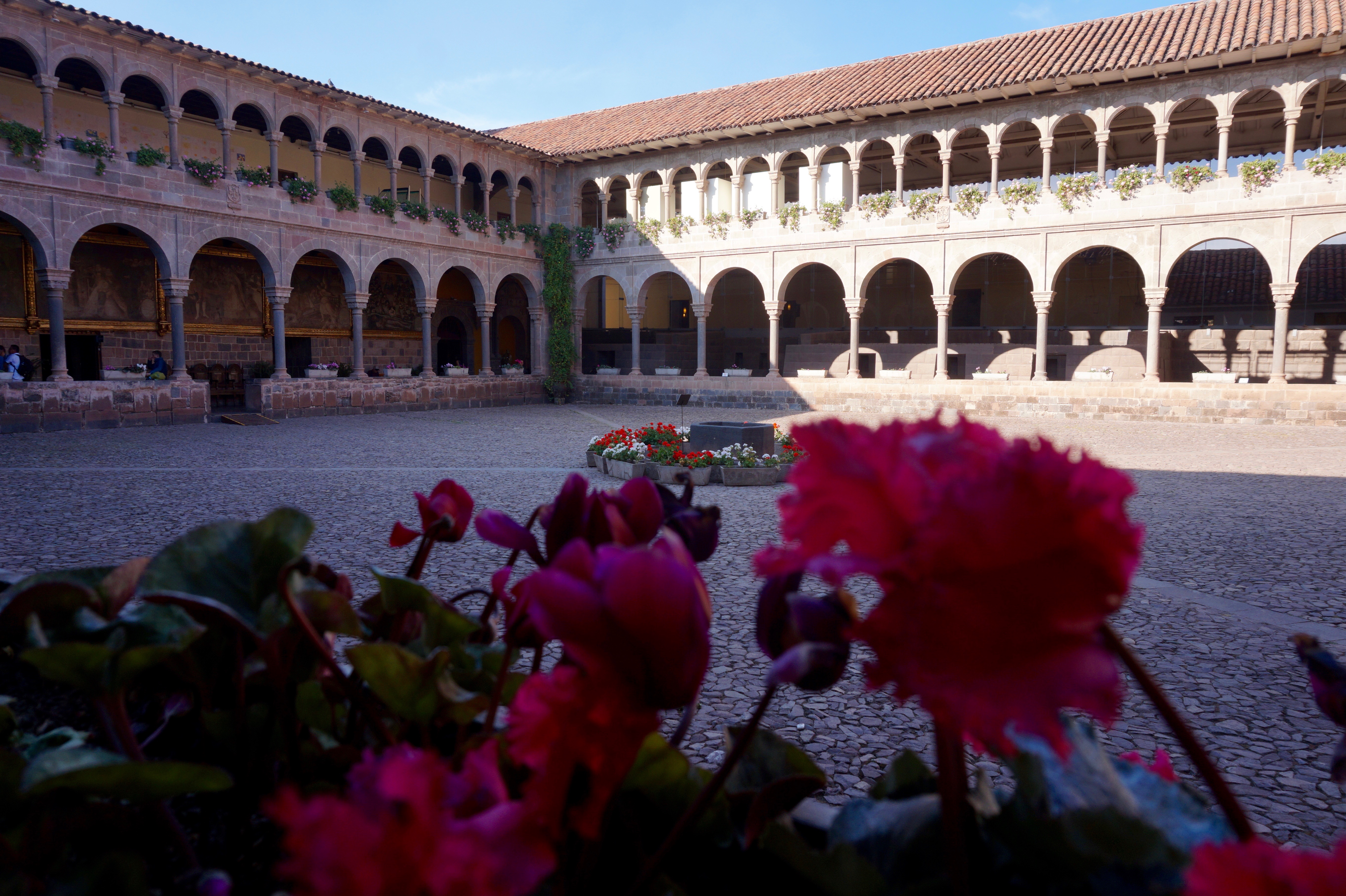
Tips for visiting Cusco:
Cusco is a great city to visit as a family, but there are a few things to know ahead of time.
Go with older kids:
I recommend waiting to visit Peru when kids are at least 10 years old. The city, like much of Peru, is not stroller-friendly (if you do visit with younger kids, do as the Peruvians do, and wear your baby or toddler in a sling). The sights in the city are filled with history and culture older kids will appreciate but preschoolers and young kids will not. And underlying it all, there is a grittiness to Peru that could be tough to navigate while carrying young kids and dealing with their needs.
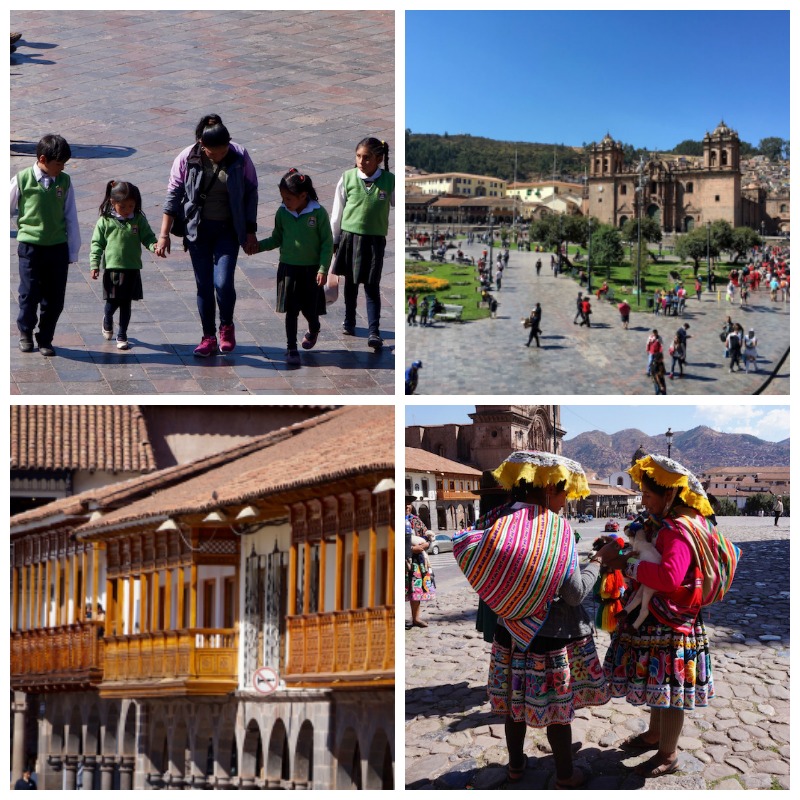
Take the altitude seriously:
Cusco is at over 11,000 feet in altitude. For families flying in from sea level (Lima), this is a big deal. On the day of your arrival, you’ll want to do nothing but get to your hotel, sit down, and relax. This is hard to do, of course, because you’ll want to go out and explore immediately. Luckily, you won’t also be fighting jet lag at the same time, as Cusco is only one hour behind Eastern Standard Time and two hours ahead of Pacific Standard Time.
There are some ways to ensure you adjust well to the altitude. In addition to taking it easy the first day, drink plenty of water, as well as coca tea (or chew coca candy), both of which can be found everywhere (especially in your hotel). You can even chew the coca leaves plain. This native plant has properties that help you adjust and alleviate some symptoms. In case you’re raising an eyebrow at ‘coca’, Peruvians grow almost twenty varieties of coca leaves, and only one of them is used to produce the illegal drug you’re thinking of. Coca tea is an herbal remedy that’s safe for the whole family (but as always, you decide what’s right for you and your family).
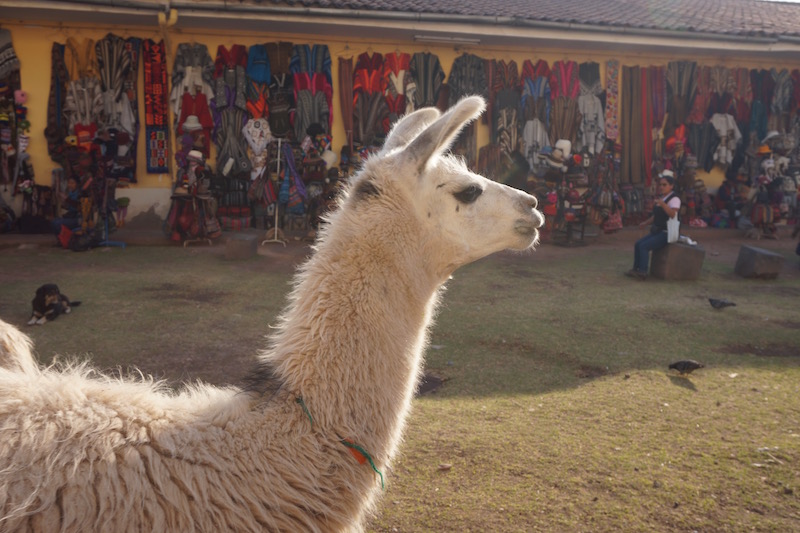
If you do feel some symptoms of altitude sickness, such as headache, dizziness, tingling in the fingers, or nausea, there are some things you can do.
Read our post on altitude sickness.
Most upscale hotels in Cusco will have canisters of oxygen for sale (and they’re cheap). The hotel staff will show you how to use them. Pharmacies in Cusco will also sell you over-the-counter medications for altitude sickness or headaches. In almost all cases, rest, oxygen, and some pain reducer solves the problem.
Take care with your water and food:
Unless you’ve opted for vaccines specifically for parasites and bacteria, don’t eat street foods in Cusco, and don’t ever drink the tap water. In fact, it’s important to keep your mouth closed in the shower or bath and to brush teeth with bottled water. Bottled water is sold everywhere, but you can also bring a reusable bottle like a LifeStaw Go with you. I do a combination of both.
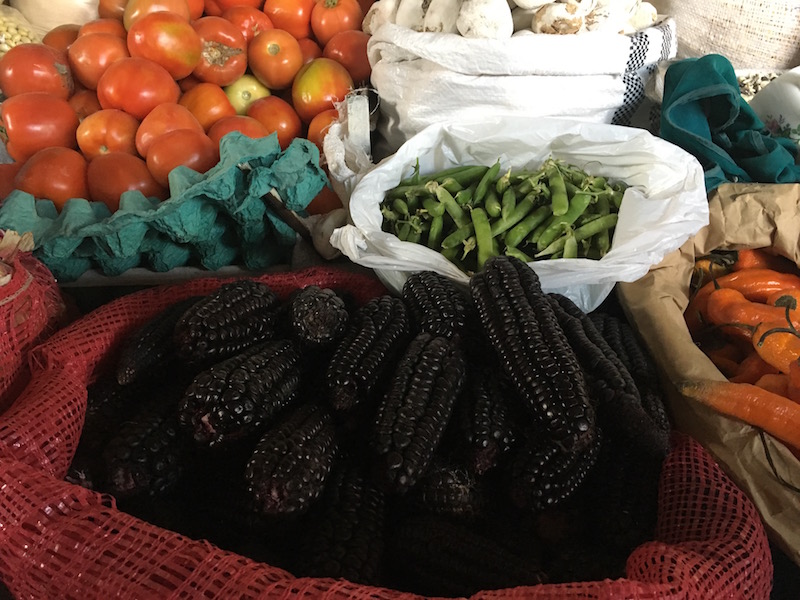
And even in restaurants, beware of produce: as a rule of thumb, don’t eat any raw fruit or vegetable that hasn’t been peeled. For me, this means forgoing salads for the length of my trip, which is sad, but better than getting sick. I stick to fruits like bananas, oranges, and melons, to avoid any skin that may have been washed with tap water.
Don’t drive:
Driving in Cusco, and indeed, all of Peru, is a wild sport that appears to take skill and luck. I wouldn’t even try. Instead, tour Peru with a small group like Vantage Adventures, or hire a driver. There are cabs, but they didn’t seem too plentiful. If you’re ambitious, you can take cheap public transit (buses only), but the good news is that most of the cultural sites are in walking distance of downtown hotels.
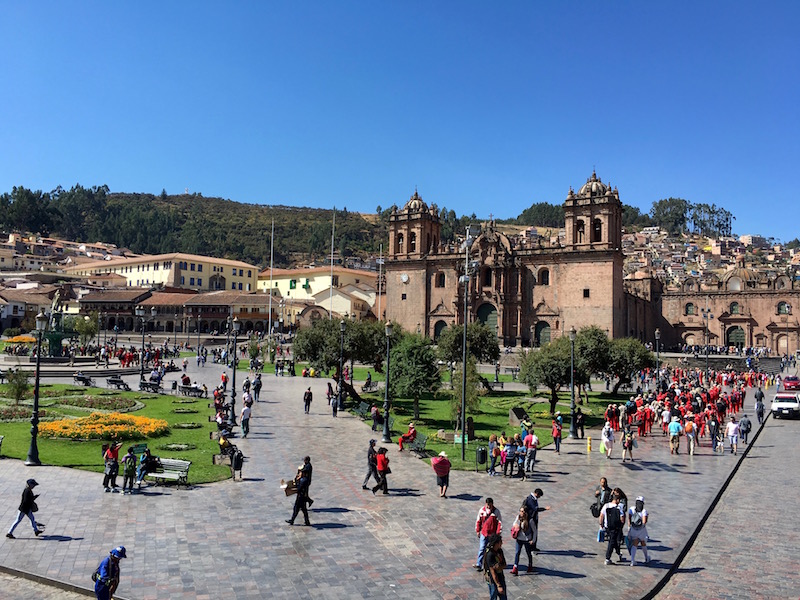
Prepare for packs of dogs:
This sounds more alarming than it is, but the fact remains that in Cusco (as well as in rural areas), domesticated dogs run wild. According to our local guide, 90% of them do have owners, but the custom is to turn them outside when the family is at work and school, where they happily roam the street (usually in packs). These dogs look rough around the edges by American standards, but they are NOT starving, and during our week in the Cusco area, we never saw any dog being aggressive. If you have kids fearful of dogs (or are huge dog lovers), it’s good to be prepared for Cusco’s dogs!
Exchange money at a bank or currency exchange center away from the airport:
This usually goes without saying, but the rates you’ll pay at the airport are downright silly. Change money elsewhere. In Cusco, restaurants and most stores will take plastic, and street vendors are happy to take American dollars (but you’ll have to do the math to ensure you’re getting a fair exchange). I preferred to withdraw soles from an exchange center or ATM.
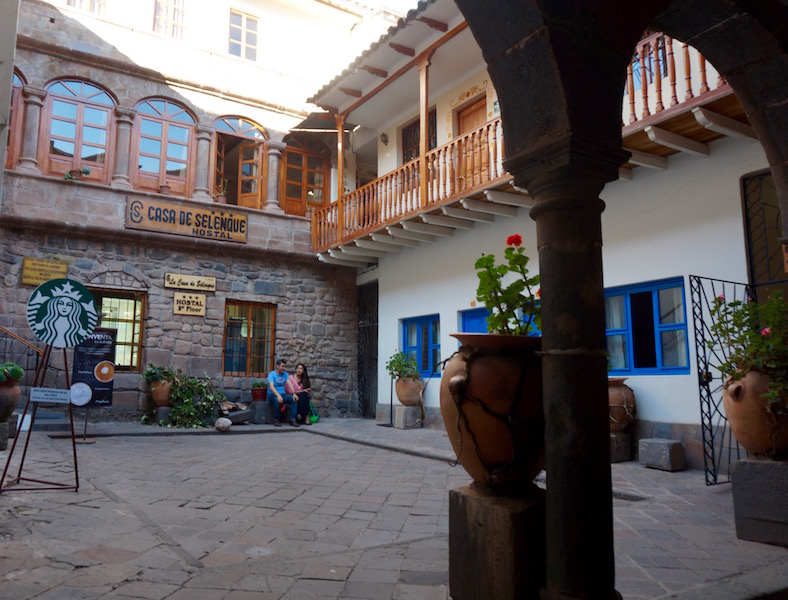
B.Y.O.T.P.:
Throughout Peru, it’s not uncommon to have public restrooms with out toilet paper. Bring your own TP. Carry your own in a day pack (or bring wet wipes). You don’t flush TP down the toilet like at home; it always goes in a trash can in the stall. It takes some getting used to!





